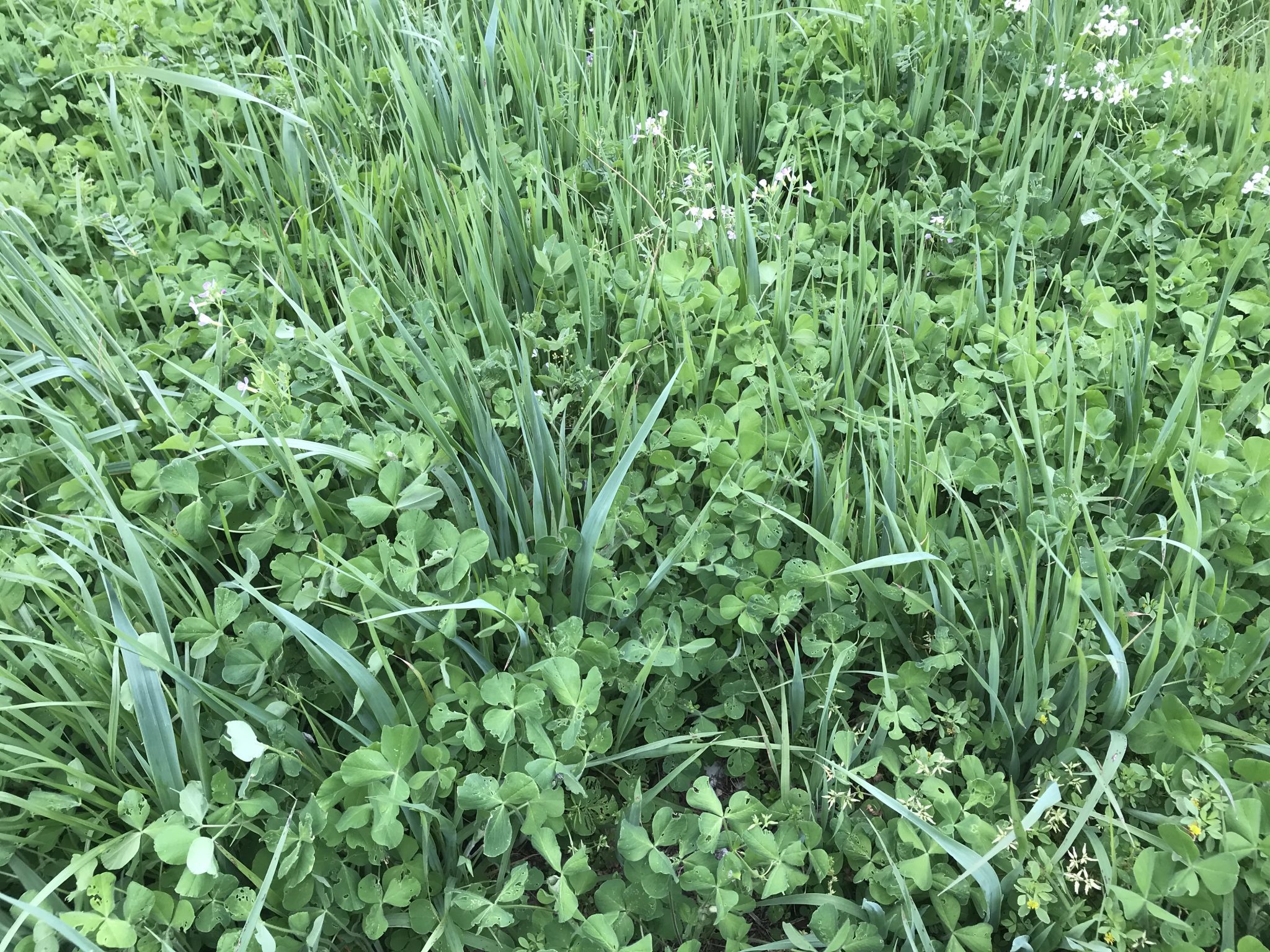Cover Crops

Learn about cover crops grown to benefit the following crop or soil and how to choose the right ones.
Cover crops are planted in the off-season and usually are not intended for harvest. Cover crops are grown to benefit the following crop and improve the soil. “Green manure” is another term often used for soil-building cover crops. Cover crops can protect the soil, feed the soil ecosystem, increase soil organic matter, and supply nutrients to following crops. Selecting the right cover crops allows growers to improve yields while providing soil and water conservation benefits.
Properly managed cover crops protect the soil surface from water and wind erosion and remediate soil compaction. Growing cover crops feeds the soil ecosystem by exuding compounds from their roots— sugars, organic acids, amino acids, and more. These materials glue soil particles together into aggregates, improving soil structure. After termination, decomposed plant residue becomes soil organic matter that provides food for soil organisms—bacteria, fungi, arthropods, and others—and increases the soil’s water storage capacity. Cover crops can also improve soil fertility in several ways. Legumes and their associated bacteria produce nitrogen that can serve as fertilizer for following crops. Similarly, the cover crop takes unused nutrients from the previous crop, reducing leaching losses and cycling nutrients in the cropping system. Deep-rooted cover crops scavenge nutrients from deep in the soil. These nutrients may become available to following crops as the residue decomposes.
In addition to the effects on soil properties, cover crops often affect pest pressures in a cropping system. Weed growth is suppressed on the soil surface by thick plant residue that blocks sunlight and slows weed seedling growth. Some cover crops produce allelopathic chemicals that inhibit the growth of weed seedlings. Others suppress parasitic nematodes or insect pests by repelling, confusing, or starving them. However, some cover crops can support insects and diseases harmful to following crops, so take care to select the right cover crop for the cropping system.
Cover crops can make an economic difference to a grower operation by reducing production costs and risks. Improved water infiltration and storage can reduce the effects of short-term droughts and irrigation costs. The production of nitrogen and the scavenging of nutrients can reduce fertilizer needs. Cover crops can reduce pesticide and application costs by suppressing weeds and pests. Reduction of erosion and soil compaction means less land preparation and tillage expense.
Read More
Download a complete PDF version of Cover Crops for Alabama, ANR-2139.
The Alabama Cooperative Extension System (Alabama A&M University and Auburn University) is an equal opportunity educator, employer, and provider. If you need a reasonable accommodation or language access services, contact Audrey Gamble at avg0001@auburn.edu.
 Audrey Gamble, former Extension Specialist, Assistant Professor, Crop, Soil, and Environmental Sciences, Auburn University
Audrey Gamble, former Extension Specialist, Assistant Professor, Crop, Soil, and Environmental Sciences, Auburn University
New September 2022, Cover Crops for Alabama, ANR-2139

